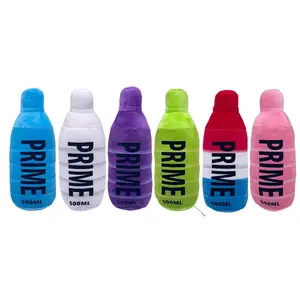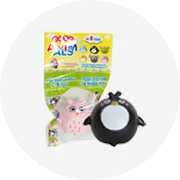الرائج في مجال عملك






استيراد الزاحف الهيدروليكي الصغير عالي الجودة من الصين وبأسعار من الصين ، شحن مجاني
جاهز للشحن
١١٬٠٧٢٫٨٢ ر.س. - ١٢٬٢١٨٫٢٩ ر.س.
لمين: 1 مجموعة
الشحن لكل قطعة: ٥٤٤٫٣٣ ر.س.






شحن مجاني حفار Rippa الصغير حفار محرك EPA 3.5 طن مجنزر حفار مصغر 1 طن 2 طن حفار هيدروليكي صغير للمزرعة للبيع
٩٬٥٤٥٫٥٤ ر.س.
لمين: 1 مجموعة







جديد البسيطة المحمول العنكبوت المشي xcm-g et110 الجبلية حفارة بعجلات مع دلو سعر للبيع
٥٧٬٢٦٩٫٣٨ ر.س. - ١٢٩٬٨١٩٫٢٣ ر.س.
لمين: 1 مجموعة







حفار مستعمل CAT307 مستعمل حفار كات مستورد مستعمل من اليابان حفار 7 طن رخيص السعر حفار صغير
٢٥٬٢٠٠٫٢١ ر.س. - ٣٣٬٦٠٠٫٢٨ ر.س.
لمين: 1 قطعة







SN35 3.5 طن حار بيع سعر المصنع مباشرة العرض الصيني شعبية حفار زاحف صغير
٧٨٬٦٥٥٫١٨ ر.س.
لمين: 5 مجموعات






صغيرة باجر 1 طن حفار صغير للبيع المملكة المتحدة XN18 مصنع توريد حفار صغير
٤٢٬٠٠٠٫٣٤ ر.س. - ٤٣٬٥٢٧٫٦٣ ر.س.
لمين: 1 وحدة






توريد المصنع الأكثر مبيعاً ، من من من من من من من من من من من
١١٬٠٧٢٫٨٢ ر.س. - ١١٬٣٧٨٫٢٨ ر.س.
لمين: 1 مجموعة






مصنع توريد الحفار الصغيرة سعر حار بيع هيدروليكي الحفار الصغير 2 طن حفار صغير حفار صغير آلة حفر صغيرة
٧٬٦٣٦٫٤٣ ر.س.
لمين: 1 قطعة






حفار صغير الطراز KUBOTA U-15 بأفضل سعر مع توريد مباشر مع تخفيضات كبيرة، ماكينة بناء بأداء جيد، حفار صغير للبيع
٢٢٬٩٠٩٫٢٨ ر.س. - ٣٨٬١٨٢٫١٣ ر.س.
لمين: 1 وحدة






ماكينة حفر صغيرة توريد المصنع حفار هيدروليكي صغير الحجم 3.5 طن ماكينة حفر صغيرة الحجم
١٣٬٢٨٧٫٣٨ ر.س.
لمين: 1 مجموعة
أعلى الفئات
حول توريد مبيعات حفارة صغيرة
تقدم Alibaba.com صورة مذهلة ودائمة وواقعية. توريد مبيعات حفارة صغيرة لقضاء وقت لعب ممتع وممتع لأطفالك. هؤلاء. لا تعتبر توريد مبيعات حفارة صغيرة متعةً لقضاء الوقت فحسب ، ولكنها أيضًا لا مثيل لها عندما يتعلق الأمر بمنتجات الألعاب عالية الجودة. هذه المواد القوية مصنوعة. تعتبر توريد مبيعات حفارة صغيرة مثالية للأطفال من جميع الأعمار وهي مزودة بجميع الأجزاء المتوفرة لتجربة واقعية. تم اعتماد هذه المنتجات واختبارها للأطفال للعب بأمان.
هذه رائعة. توريد مبيعات حفارة صغيرة مصنوعة من البلاستيك المقوى ، وتقاسم المنافع والمتانة والاستدامة. يمكن لهذه المركبات أن تتحمل بسهولة الاستخدامات القاسية من قبل الأطفال وهي مركبات متوازنة توفر لهم ركوبًا رائعًا وآمنًا. هؤلاء. تم تجهيز توريد مبيعات حفارة صغيرة بأبواب يمكن فتحها ، ومصابيح أمامية وخلفية قوية ، وأنظمة موسيقى تعمل على النحو الأمثل ، وأجهزة تعليق قوية. هؤلاء. تم تجهيز توريد مبيعات حفارة صغيرة بأربع عجلات قيادة EVA و 4 محركات قيادة متميزة.
تقدم Alibaba.com عدة عروض متميزة. تتوفر توريد مبيعات حفارة صغيرة بميزات متعددة لتناسب متطلباتك. هؤلاء. تتوفر توريد مبيعات حفارة صغيرة في كلا الإصدارين الكهربائي والبطاري مع بدء تشغيل المحرك الكهربائي. يمكن الوصول إلى البطاريات إما بخيارات قابلة للإزالة أو غير قابلة للإزالة وتأتي بسعات مميزة. يمكنك تخصيص هذه الأشياء الجميلة تمامًا. توريد مبيعات حفارة صغيرة ويمكنهم القيادة على أي تضاريس أرضية وامتلاك مصدات أمامية للأمان.
تصفح عبر مختلف. نطاق توريد مبيعات حفارة صغيرة على Alibaba.com واشتر المنتجات التي تتناسب مع متطلبات ميزانيتك. هذه المنتجات حاصلة على شهادات ISO ، CE ، SGS ، ومتاحة كطلبات OEM. يمكنك أيضًا البحث عن خيارات تغليف مخصصة لعمليات الشراء بالجملة.
هذه رائعة. توريد مبيعات حفارة صغيرة مصنوعة من البلاستيك المقوى ، وتقاسم المنافع والمتانة والاستدامة. يمكن لهذه المركبات أن تتحمل بسهولة الاستخدامات القاسية من قبل الأطفال وهي مركبات متوازنة توفر لهم ركوبًا رائعًا وآمنًا. هؤلاء. تم تجهيز توريد مبيعات حفارة صغيرة بأبواب يمكن فتحها ، ومصابيح أمامية وخلفية قوية ، وأنظمة موسيقى تعمل على النحو الأمثل ، وأجهزة تعليق قوية. هؤلاء. تم تجهيز توريد مبيعات حفارة صغيرة بأربع عجلات قيادة EVA و 4 محركات قيادة متميزة.
تقدم Alibaba.com عدة عروض متميزة. تتوفر توريد مبيعات حفارة صغيرة بميزات متعددة لتناسب متطلباتك. هؤلاء. تتوفر توريد مبيعات حفارة صغيرة في كلا الإصدارين الكهربائي والبطاري مع بدء تشغيل المحرك الكهربائي. يمكن الوصول إلى البطاريات إما بخيارات قابلة للإزالة أو غير قابلة للإزالة وتأتي بسعات مميزة. يمكنك تخصيص هذه الأشياء الجميلة تمامًا. توريد مبيعات حفارة صغيرة ويمكنهم القيادة على أي تضاريس أرضية وامتلاك مصدات أمامية للأمان.
تصفح عبر مختلف. نطاق توريد مبيعات حفارة صغيرة على Alibaba.com واشتر المنتجات التي تتناسب مع متطلبات ميزانيتك. هذه المنتجات حاصلة على شهادات ISO ، CE ، SGS ، ومتاحة كطلبات OEM. يمكنك أيضًا البحث عن خيارات تغليف مخصصة لعمليات الشراء بالجملة.

































